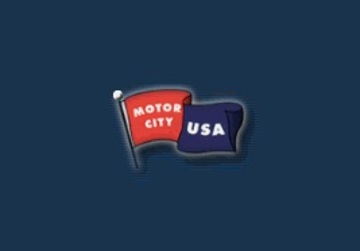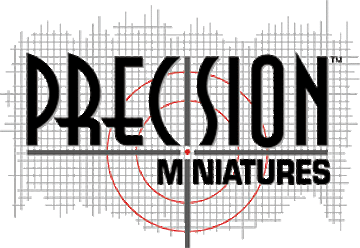Gene Parrill
Designer
Amongst the small band of American producers in the USA, Gene Parrill stands out as having been in business for some time.
Gene recalls that in 1964 he went into a toy store to buy a birthday present for his daughter. He saw a Solido 1:43 model of a Le Mans Porsche that he didn't know anything about, and as he was driving a 1959 Porsche 356A coupe at the time, he bought it. Later he thought it might be a fun hobby to collect Porsche models so he began ordering from Sinclair's Auto Miniatures.
Subject ID: 82956
MoreAmongst the small band of American producers in the USA, Gene Parrill stands out as having been in business for some time.
Gene recalls that in 1964 he went into a toy store to buy a birthday present for his daughter. He saw a Solido 1:43 model of a Le Mans Porsche that he didn't know anything about, and as he was driving a 1959 Porsche 356A coupe at the time, he bought it. Later he thought it might be a fun hobby to collect Porsche models so he began ordering from Sinclair's Auto Miniatures.
A few years later Gene discovered Replicars in California and started ordering from them as well. In 1968 Gene was transferred to the Los Angeles area where Replicars was based and in due course he met the owner, Lynn Becker. Lynn told Gene he was going to sell the business. Since Gene’s wife had just started University and wanted to make some money in her spare time, they bought Replicars, moved it into their garage, and renamed it Marque Products.
They stocked all of the diecast lines that were available at the time, and also all the white metal kits. However there were a number of models that were not being produced. Gene contacted John Day and had him make up 50 models each of the 1952 Porsche that won its class at Le Mans, the Porsche 904 and the Porsche Carrera Abarth, and sold them through his mail order company. Dale King made him two more Porsche masters.
Around 1977 Gene was approached by Lloyd Asbury with the idea of making their own white metal kits. Lloyd had been the pattern maker for IMRA which produced the 1973 Indy Eagle in 1:40 scale and then went out of business. Once Lloyd had left IMRA, he showed Gene a master he had improved for him, and Gene was sold on the idea. Precision Miniatures was formed, they agreed to a business plan, and Gene bought the required centrifugal casting equipment and moulding machine. Lloyd contributed his three 1:40 scale Indy masters, which became the first Precision Miniatures kits, and they started production.
In the space of 8 years, Precision Miniatures (PM) had designed, mastered, and cast about 30 models, built an international reputation, and then finally disappeared from the 1:43 scene. An innovative company, they introduced photo-etched wire wheels, and their first in house PM kits were as good as the best European kits, according to Wayne Moyer of Model Cars, who had the enviable task of reviewing them as they were issued.
Wayne described the PM company as a result of a perfectly matched partnership. Gene had left his job in the computer industry to operate Marque Products, and continued to be a model enthusiast who understood the hobby, but with the knowledge, business sense and ambition to promote and manage a thriving business.
He similarly described Lloyd Asbury as a superb master modeller capable of designing and creating a detailed and accurate miniature automobile, and then reducing it to parts that could be cast cleanly and assembled easily. Whilst Lloyd was the principal pattern maker, Dick Armbruster made 2 or 3 masters for the partnership, and Western Models made the 1953 Corvette.
The early PM kits were marketed through Marque Products, which was based next door to Gene’s address for PM. Wayne describes the PM Indy kits as very cleanly cast, complete with photo-etched parts, and reminds the reader that when he wrote in 2009, the kits were 30 years old!
The photo-etched wire wheels came with the Ferrari 250 Lusso pictured here, released in 1979. Wayne notes in his profile in 2009 that in the early 1980s, PM was the only kit maker he knew that issued kits with all the major mould lines removed.
In mid 1981 Gene sold Marque Products to concentrate on PM, and Marque Products continued to sell both PM kits and factory built models. During this year there were casting difficulties with a Hudson model, which had been mastered by Dick Armbruster. By October 1982, Gene had received an offer too good to refuse, and had gone back to work in the computer industry full time. Gene continued to work evenings and weekends at PM, with Lloyd Asbury continuing the casting. Sales and model development was slowing up, caused mostly by the labour of love for Lloyd that was the Hudson Hornet. It was Lloyd’s favourite car, but not high on customer’s wants lists.
Tendering for a contract to make 1:32 promotional models was unsuccessful, and PM lost valuable funds on that. Wayne Moyer records that many more factory built models were made than was first apparent. A number of builders were making in batches of 12 to 24 models, including Nestor Spinelli, and also Jim Waters, Mike Arensdorf, and Jack Hudson.
By November 1984, Doug Johnson had purchased Gene’s share of Precision Miniatures, and Lloyd Asbury had remained as a major shareholder, and continued to run the casting equipment for Precision Miniatures Incorporated (PMI). Within a few weeks, PMI had moved from Irvine to Newport Beach. Under Doug’s direction, PMI’s emphasis moved towards fully finished models, and in due course no further new kits were produced. All the models were labelled as PMI, and Made in the USA 1984, although some were made as late as 1987. In due course, Lloyd also sold his share of the company to Doug.
Wayne Moyer describes the quality as being variable, and records that PMI disappeared quietly in 1986. There were plans for a signature series of models, but the moulds and names were sold, and Gene was involved for a while with a third owner in some high quality hand built models.
Wayne’s conclusion in 2009 was that PM was not the same after Gene went back to full time employment, but that whilst it lasted, 2 very talented people produced some of the best 1:43 kits made in the USA. It is a testament to these models that they still hold their own against similar models produced today.
Subject ID: 82956
Subject ID: 82956

